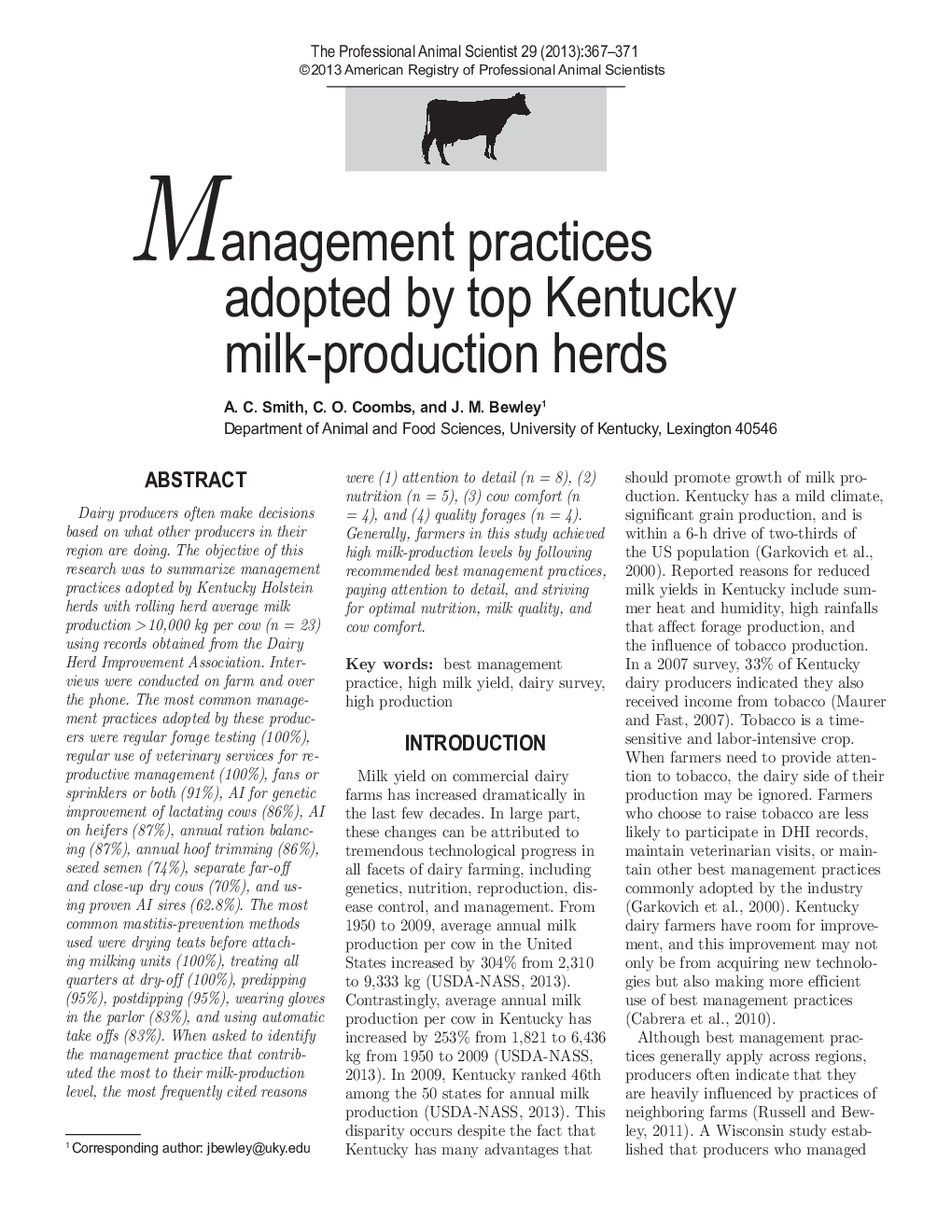| Article ID | Journal | Published Year | Pages | File Type |
|---|---|---|---|---|
| 2453969 | The Professional Animal Scientist | 2013 | 5 Pages |
Abstract
Dairy producers often make decisions based on what other producers in their region are doing. The objective of this research was to summarize management practices adopted by Kentucky Holstein herds with rolling herd average milk production >Â 10,000Â kg per cow (n = 23) using records obtained from the Dairy Herd Improvement Association. Interviews were conducted on farm and over the phone. The most common management practices adopted by these producers were regular forage testing (100%), regular use of veterinary services for reproductive management (100%), fans or sprinklers or both (91%), AI for genetic improvement of lactating cows (86%), AI on heifers (87%), annual ration balancing (87%), annual hoof trimming (86%), sexed semen (74%), separate far-off and close-up dry cows (70%), and using proven AI sires (62.8%). The most common mastitis-prevention methods used were drying teats before attaching milking units (100%), treating all quarters at dry-off (100%), predipping (95%), postdipping (95%), wearing gloves in the parlor (83%), and using automatic take offs (83%). When asked to identify the management practice that contributed the most to their milk-production level, the most frequently cited reasons were (1) attention to detail (n = 8), (2) nutrition (n = 5), (3) cow comfort (n = 4), and (4) quality forages (n = 4). Generally, farmers in this study achieved high milk-production levels by following recommended best management practices, paying attention to detail, and striving for optimal nutrition, milk quality, and cow comfort.
Related Topics
Life Sciences
Agricultural and Biological Sciences
Animal Science and Zoology
Authors
A.C. Smith, C.O. Coombs, J.M. Bewley,
